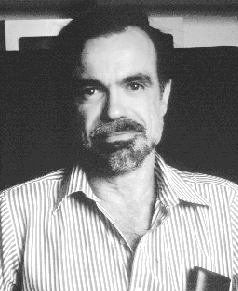
Spring/Summer 1999
Volume 6, Issue 2
Spring/Summer 1998
Volume
3, Issue 1
January 1995
Volume
2, Issue 4
October 1994
Volume
2, Issue 1
January 1994
 Jorge Moré
Jorge Moré
Senior Scientist, Mathematics and Computer Science Division, Argonne National Laboratory
Jorge Moré earned a B.S. (1966) and M.S. (1968) in Applied Mathematics at the Georgia Institute of Technology, and his Ph.D. (1970) at the University of Maryland. "My early work was theoretical, but I soon became interested in computational issues when I realized that software plays an essential role in optimization research," he says. "I quickly learned that developing robust and efficient software was just as hard, if not harder, than analyzing algorithms. Moreover, it was fun, and even addictive!"
Moré began his career in 1970 as assistant professor at the Cornell University Computer Science Department, then accepted the position of computer scientist at the Mathematics and Computer Science Division at Argonne National Laboratory (ANL) in 1976. From 1978 to 1979, he was Senior Research Fellow at the Department of Applied Mathematics and Theoretical Physics at Cambridge University, England, and in 1986 was adjunct professor at Northwestern University. In 1989, Moré was promoted to his current position of senior scientist at ANL.
Moré is interested in all aspects related to the development of algorithms and software for large-scale optimization problems. In particular, his research focuses on optimization software for high- performance computers, optimization problems in macromolecular modeling, global optimization, and economic equilibrium problems. "Optimization is a particularly attractive research area because it remains a largely underdeveloped area, with many physical scientists still unaware of how optimization can help them," he says. "There are many interesting optimization problems that arise in applications; for example, fluid dynamics, medicine, combustion, molecular design, nondestructive testing, chemical kinetics, optimal design, and superconductivity."
Moré is a member of the Optimization Technology Center (OTC), a joint enterprise of ANL and Northwestern University. Founded in 1994 with support from the U.S. Department of Energy, the OTC's mission is to make potential users in industry, government, and academia aware of how optimization technology can aid their work, and make the latest techniques widely available. Moré is leading the effort to develop the Network-Enabled Optimization System (NEOS) Server, an OTC project that provides remote solution of optimization problems over the Internet without the need to download and link code. The NEOS server uses state- of-the-art algorithms to solve optimization problems automatically with minimal input from the user. For example, users with nonlinear problems can opt to have derivatives calculated automatically. (See Summer 1995 Parallel Computing Research, page 6.) Users submit problems via email, ftp, or the World Wide Web; results are returned via email and/or their Web browsers. The newly developed NEOS submission tool provides a high- speed, socket-based interface to all the facilities available with the NEOS server. For more information, see http://www-neos.mcs.anl.gov/neos/ .
Moré is also leading the development of ELSO, an environment for solving large-scale optimization problems that only requires the user to provide code to evaluate a partially separable function. ELSO has attracted considerable attention by merging automatic differentiation and optimization techniques into a problem-solving environment with unique features. He is also developing MINPACK-2, a collection of high-quality optimization software for the solution of large-scale problems.
Moré is co-author of the Optimization Software Guide and author or co- author of more than 50 papers and technical reports. His professional activities include the Wilkinson Fellowship Committee (chair), the SIAM Activity Group on Optimization (chair), and the Board of Trustees of the Wilkinson Prize for Numerical Software. As a member of the CRPC Technical Steering Committee, Moré says, "The CRPC has proved to be fertile ground for generating interesting projects. In particular, the merging of automatic differentiation and optimization is a project in which the CRPC has played a vital role."
Table of Contents